The Species of Baobab Trees
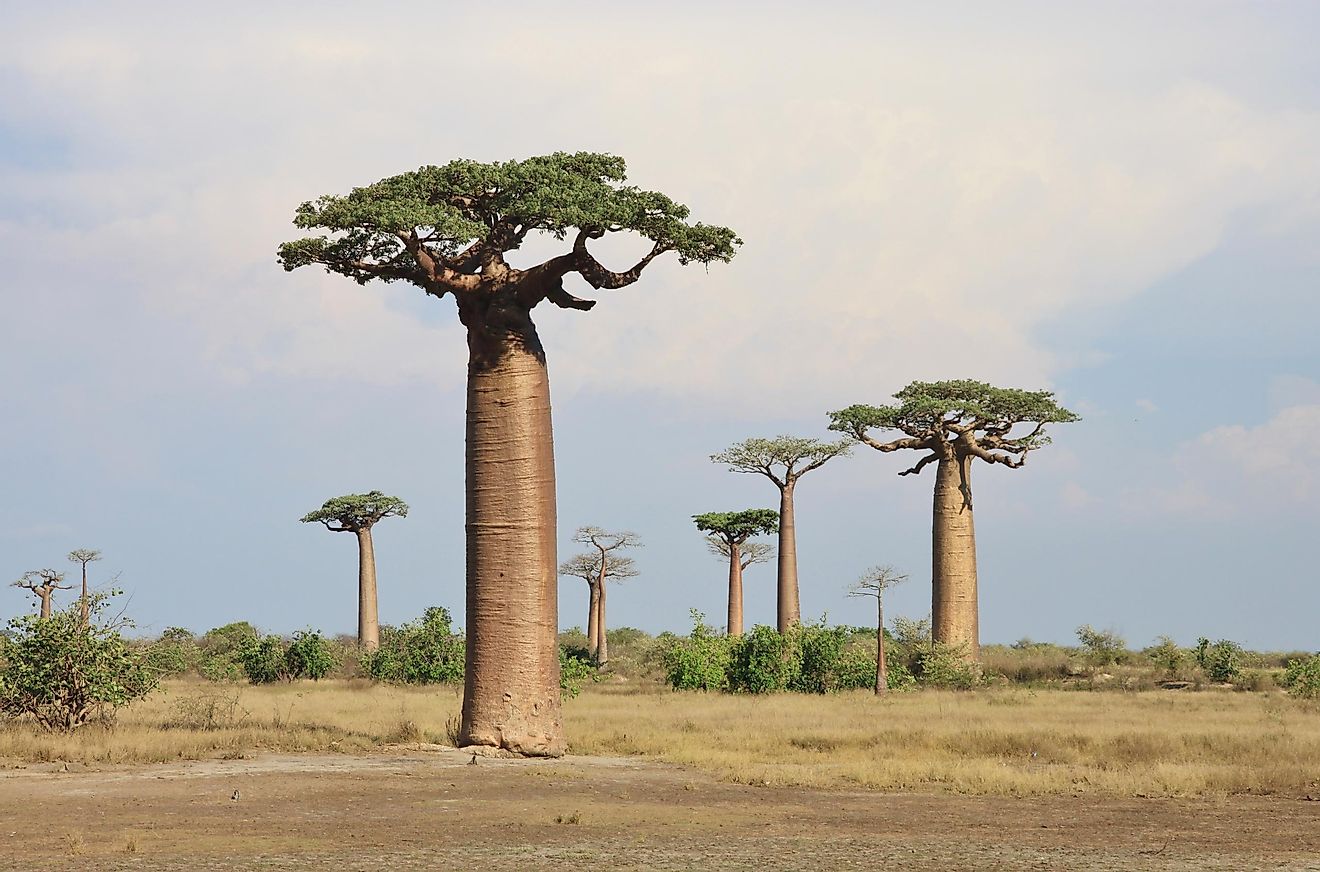
The genus Adansonia, commonly referred to as the baobab tree, is divided into nine species, which are found only in Madagascar, Africa, Australia, and the Arabian Peninsula. Six of the nine species of baobab are native to Madagascar. Only one of the nine species is native to Australia, while two species are native to mainland Africa and Arabia.
9. African Baobab
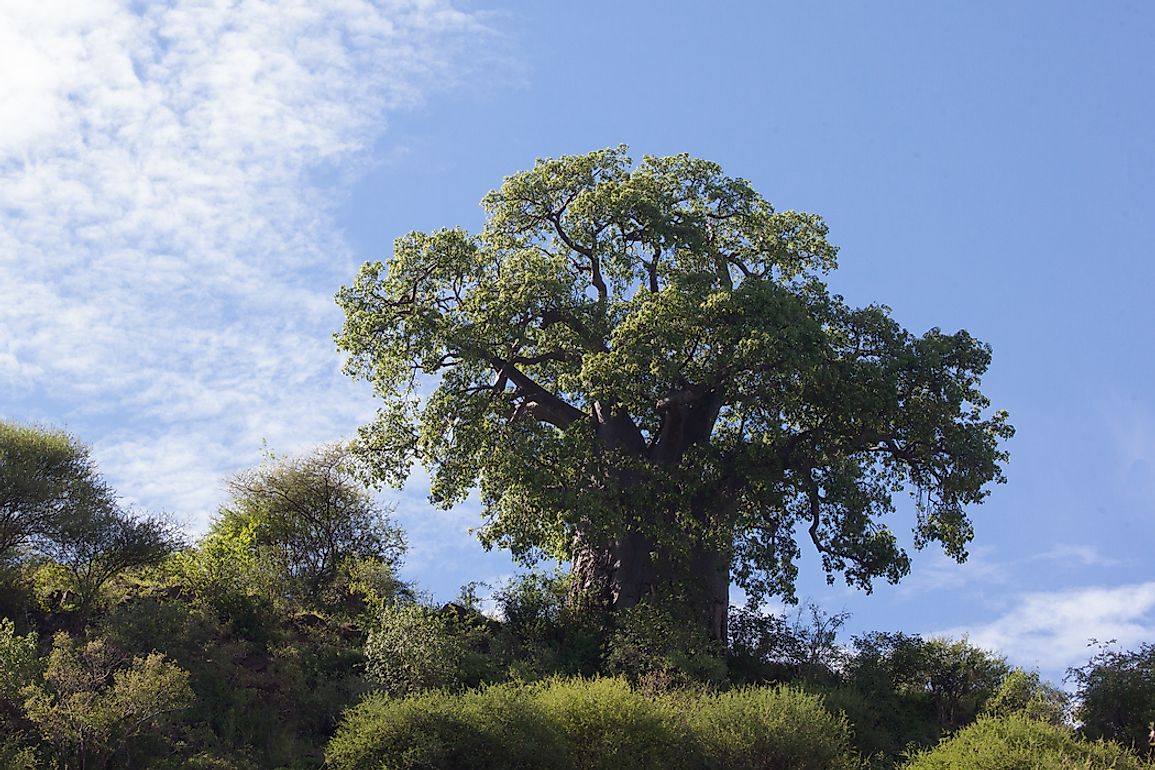
Found in the Sub Saharan Africa, the African Baobab is biologically known as Adansonia digitate. It grows in dry hot savannahs. This species of the Baobab is most widely spread in the African continent. The tree grows up to 12 meters wide and 25 meters tall. It has yellow-white flowers and possesses a beautiful carrion scent. The fruit of the African Baobab is a superfruit containing many nutrients. The tree is also popular for its medicinal value and being a source of shelter. It also provides food and water for both humans and animals.
8. Australian Baobab
Australian Baobab is scientifically known as Adansonia gregori. The locals call the tree boab. It is a huge baobab with a swollen trunk which is bottle-like and the fruits resemble a gourd. The tree grows in Kimberley in the western part of Australia and the east northern territory of the country. The Australian Baobab loses its leaves during the dry season. During the wet season, the tree produces new leaves and flowers with large white petals. A large hollow baobab tree grew in South of Derby in Western Australia. This tree was used to lock up prisoners before sentencing. The Australian Baobab tree is also used by Australians as a source of water since its hollow trunks store water.
7. Montane African Baobab
The Montane African Baobab is found in the upland areas of Southern and Eastern Africa. It is very easily recognizable as it has a swollen base on its trunk as well as a bottle like appearance. The scientific name of the tree is Adansonia Kilima. The predominant features of the Montane African Baobab include (1) a trunk that can store water, (2) a thick bark that is able to protect it from fires during dry season, (3) tap roots that are long enough to reach water or even moisture, and (4) a few leaves to reduce water loss. The Montane African Baobab is able to endure harsh climatic conditions like droughts. It sheds its leaves during the dry seasons.
6. Giant Baobab
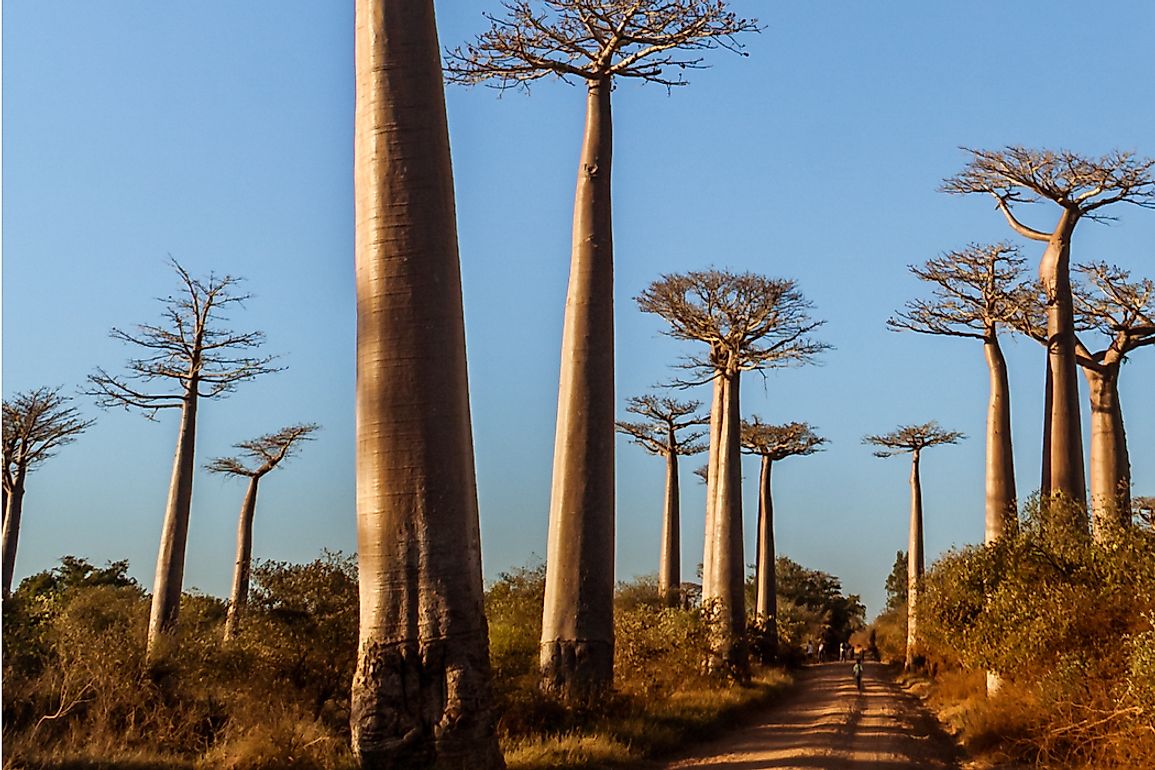
Also referred to as Grandidier’s baobab and Adansonia grandidieri, the Giant Baobab was named after a French botanist called Alfred Grandidier. It is among the most famous baobab species in Madagascar. The tree is characterized by huge cylindrical trunks which are covered with smooth reddish grey barks. The Giant Baobab can grow as tall as 30 meters high. The leaves are bluish green in color while the petals are white with dark brown floral buds. The dry fruits are large and have kidney-shaped seeds. The Giant Baobab bears ripe fruits in November and December. In October-May the leaves blossom. The months of May-August is the season for flowering of the Giant Baobab. The tree is classified as an endangered species by the IUCN.
5. Perrier's baobab
Perrier’s Baobab, Adansonia perrieri, is found in the northern part of Antsiranana in Madagascar. Its leaves are a source of food to most people while the dried fruit pulp is a food ingredient. The tree contains various nutrients such as protein, calcium, magnesium, riboflavin, and phytosterols among others. Perrier Baobab’s dry fruit is also important for making juices and ice creams. Many birds pitch their nets on the tree. The Perrier’s Baobab is listed by the IUCN as endangered. Its habitat has been lost to agriculture and development. As a result, it is the rarest baobab species in Madagascar.
4. Za Baobab
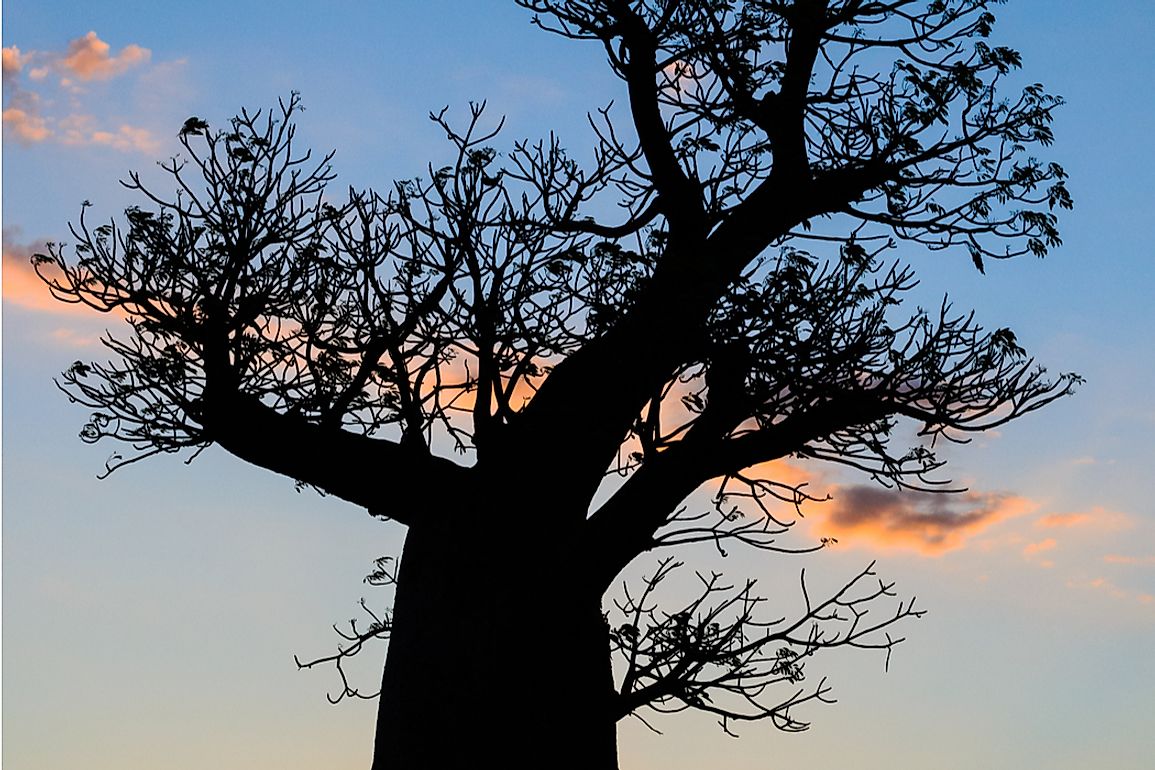
Za baoba, Adansonia za, resembles the African Baobab. It is a common baobab species in Madagascar. The name “Za” comes from the Malagasy word meaning tree. The tree has a thick trunk. In addition, its main branches are large and found on top of the tree. The maximum height of Za Baobab is unknown, but the girth is about 75 feet. The tree has a black fruit and seeds that contain 11% oil. Its flowers are yellow and red. Besides, the Za Baobab produces a musty sweet scent. It grows in deciduous forests, thickets, humid riparian zones, sub arid and semi-arid degraded sub lands. Presently, the major threat to Za Baobab is habitat loss.
3. Madagascar Baobab
Madagascar baobab, Adansonia madagascariensis, grows to about 80 feet tall. The habitat of the tree is moist or dry deciduous forests. Madagascar baobab has a smooth back and wide trunk which makes it a favorite for most artists and photographers. Its flowers are dark red in color. The soft leaves of the Madagascar baobab can be eaten as vegetables. Its fruits are also edible and the seeds used to make vegetable oil. The powder prepared from the dry fruits is a thickening agent for gravies, a flavor additive to hot sauces, and a sweetening agent for drinks.
2. Fony baobab
Known scientifically as Adansonia rubrostipa, Fony baobab is found in Northeastern and Southwestern parts of Madagascar. It is the smallest species of baobab in the country growing to about 4-5 meters tall. Fony’s trunks are bottle-shaped with a constriction below the upper part of the branches. Its odd look causes some people to say that the tree resembles a potato or giant tea pot. The colors of the flowers vary from bright orange hues to yellow. The Fony Baobab holds water within its trunk. Thus, it appears older than its actual age. Its inner bark is used to make very strong ropes and cordage. The Fony baobab is protected in a number of reserves since it faces exploitation by locals who use it for shelter constructions and rope making. The habitat of Fony Baobab is thorny thickets, spiry forests, and arid scrublands.
1. Suarez Baobab
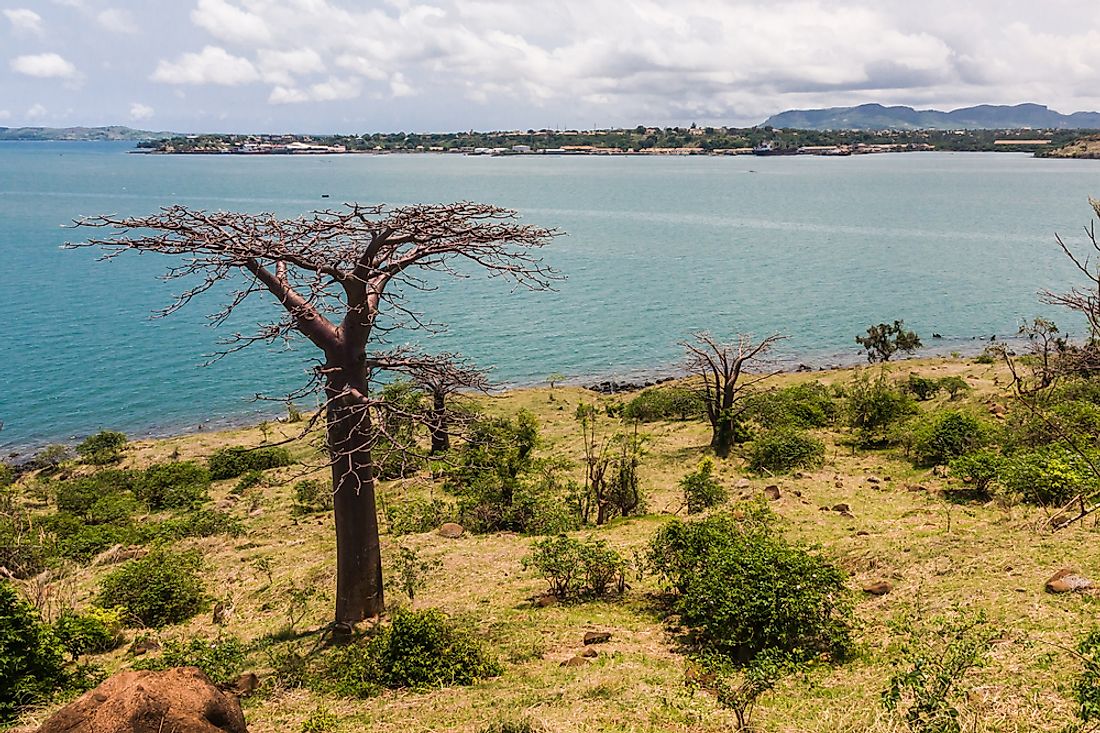
Also known as Adansonia Suarezensis, the Suarez Baobab is a native of the Northern Island of Madagascar. It was named after Diego Soares who was a Portugal navigator. The tree sheds its leaves annually and pollination of its white flowers is facilitated by bats. The flowers often bloom at night. Human beings use the Suarez Baobab for shelter, ceremonies, medicine, food, fiber, and juices. The trunk is home for reptiles, bat and inspects. Suarez Baobab’s biggest threats to survival are lightning, water logging, black fungus, as well as drought. In fact, the tree is listed as endangered by IUCN.







